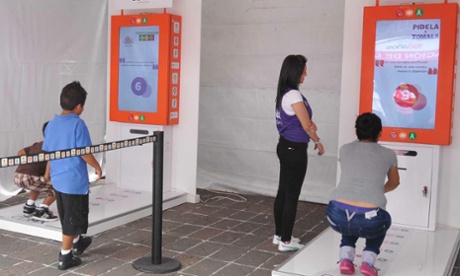
In 2013, Mexico squeezed past the United States to become one of the fattest nations on the planet – with 32.8% of the population classified as obese, according to a UN report. In response, its government announced a hefty tax on sugary drinks. Now, though, it is getting a bit more creative, and installing 30 motion-sensitive machines at subway stations that will dispense a free ticket to anyone who completes 10 squats.
Incentive-driven approaches to fighting obesity – essentially paying people to lose weight – are not new, though anyone hoping to profit on their new year diet might want to move to Dubai, where, in 2013, the government offered its citizens 1 gram of gold for every 1kg (2.2lbs) they lost.
More importantly, such incentives appear to work – studies have shown that financial rewards are an effective motivation for weight loss. So combining a spot of exercise with saving money on that universal grind, the daily commute, is perhaps less gimmicky than it appears.
But will it really make any difference? A basic squat involves moving into a crouching position, sticking the bottom out, heels down, weight centred over your feet, and up again. It’s perhaps not the most dignified move to make in a crowded station, but a brilliant exercise for the legs and core.
There are endless variations on the humble squat, from jump squats to lumping huge weights on your back – officials in Mexico City should definitely consider giving an upgrade to anyone who can manage those squats with a suitcase on each arm.
Ten squats a day, however, is a fairly low baseline and unlikely to burn more than a handful of calories. What it might do – and this, you imagine, is the government’s hope – is start a virtuous circle. If you have knocked off your 10 squats, you might opt for the stairs over the lift, or walk a little further than usual on the way home.
One Russian station tried a similar idea before the Sochi Winter Olympics – though the exchange rate there was a less favourable 30 squats per ride. Obesity rates in the UK are the highest in Europe, so might London Transport consider the same approach? The press office, alas, gives short shrift to the idea. “Errr, no,” says a spokesman.
Then again, Mexico City’s subway tickets cost five pesos (22p), the equivalent of two squats per peso. A peak zone 1-only ticket with an Oyster card in London is currently £2.30 – around 50 pesos. So that’s 100 squats, 200 for a return, or a whopping 515 squats for an £11.70 zone 1-6 travelcard. And you probably wouldn’t even get a seat either.

